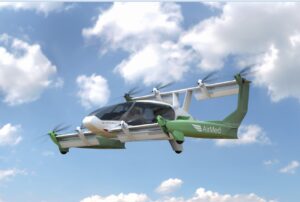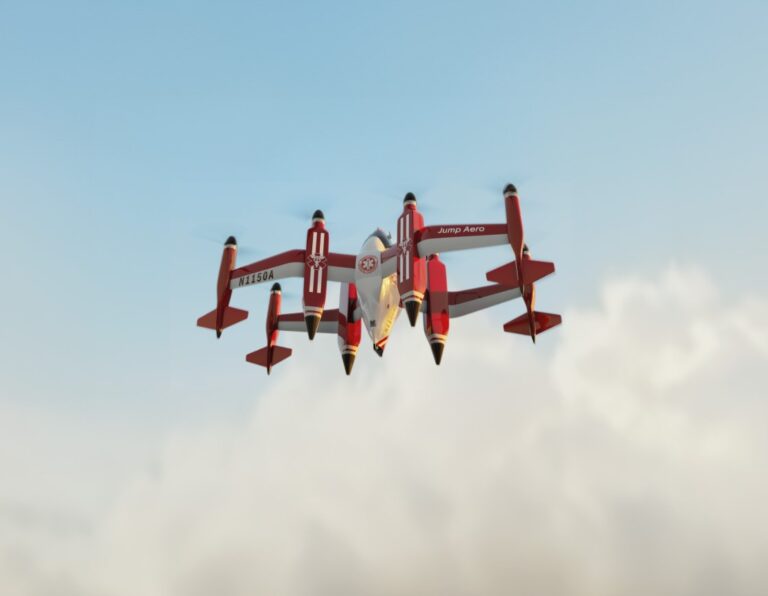When people think of search and rescue operations, they often think of helicopters before any other aircraft. The exception might be the use of fixed wing aircraft in Australia by the Royal Flying Doctor Service. However, that could be about to change thanks to a partnership announced last year between Airbus Helicopters and the Norwegian Air Ambulance Foundation, Norsk Luft Ambulanse, to develop CityAirbus Next Gen’s medical services in Norway.
eVTOL aircraft project manager Harald Jøsendal at Norsk Luft Ambulanse says that the project is still at an early phase in its development. While the partners are looking to use eVTOL aircraft for emergency air medical health services, they don’t see them being used to transport patients to hospitals in the first instance. Their main role, he suggests, would be to fly critical media personnel, defibrillators, and medicines out to the patient very quickly. “In this project we are looking into two possible geographical areas – cities and rural areas of the country,” says Jøsendal.
With cities becoming more congested around the world, road ambulances often have to struggle with traffic jams, even when the occasion is critical to saving life. Helicopters can certainly be used, but the overall message is that they are a scarce resource, and due to their size, they are unable to land anywhere at any time in urban areas.
There is therefore an opportunity for eVTOLs or hydrogen VTOLs (hVTOLs) to fill this void. Doctors and paramedics could fly to a scene more quickly, and with fewer limitations to patients.
The Norwegian coast has many islands. A journey to them can take a long time. Jøsendal therefore asks: “Can an eVTOL become the medical boat of the future between the islands?” The answer is possibly. In the development project, there are three questions the partners want to answer. How much does the addition of eVTOLs in the air medical services provide a benefit for the patient? To which extent does it contribute to greener aviation
and sustainability and finally, how will it improve the emergency air medical health service efficiency?
First response

Carl Dietrich, founder and president at Jump Aero, certainly believes that eVTOLs could be a replacement for some helicopter air ambulances. Yet he stresses that the medical use that Jump Aero considers to be most compelling is as an emergency first response capacity in rural areas. For example, to stabilize a heart attack or brain injury patient. He agrees that eVTOL aircraft won’t be for patient transport.
Dietrich explains, “This is a fundamentally different mission than the traditional helicopter air ambulance mission whose primary purpose is to transport patients. In an emergency first response mission, a purpose-built eVTOL can deploy faster than a helicopter, fly faster than a helicopter, and land nearer the emergency – all of which improve response time and patient outcomes relative to the current state of the art.
“Stabilization, establishing oxygen to the brain and stopping the bleeding, is more time-critical than transportation. As such, a small eVTOL like the Jump Aero JA1 Pulse can be used economically in concert with traditional ambulance-based transportation to dramatically improve patient outcomes in rural areas.”
Patient transport
While small eVTOLs certainly won’t be suited to patient transport, Michael Cervenka, chief commercial & technology officer at Vertical Aerospace says the company’s much larger VX4 will offer that capability. “The VX4 will offer enough cabin space to support patient transport missions or the transportation of organs.” He even predicts that they will be capable of conducting Search and Rescue (SAR) missions within the next decade. The premise for this opportunity is the advancement of battery technologies.
In 2018, Volocopter and ADAC Luftrettung, a German emergency service provider joined forces to explore the use of multicopters in emergency medical services (EMS) through a feasibility study. Using a VoloCity aircraft, the research included more than 26,000 simulations of aeromedical missions in two German regions.
The findings suggested that such aircraft could extend the supply and coverage areas and ensure the rapid deployment of doctors to emergency sites, and in 2023 Volocopter signed an agreement with ADAC Luftrettung for the purchase of two VoloCity aircraft with a “reserve of up to 150 future aircraft”.

Research operations
Volocopter’s says that once they receive European Union Aviation Safety Agency (EASA) certification, ADAC will start using the two VoloCity aircraft for research operations and testing within the two German regions. The hope is that they will be able to gather data and learn new lessons that will help both Volocopter and ADAC to adapt the aircraft to special medical missions use.
Key to the attractiveness of using eVTOLs, or even certain hVTOLs, is their ability to reduce emergency response times compared to ground-based emergency vehicles. This makes them a cost-effective choice
for emergency medical service providers. They require fewer personnel and involve fewer complex procedures
for maintenance.
Location flexibility
Andrew Moore, CEO and co-founder of AMSL Aero and inventor of the Vertiia eVTOL aircraft, comments that in Australia it is very rare for there to be a runway very close to where the patient is, and in some cases it’s even rarer for them to be close to a place where there is a hospital. A town or a homestead in the Outback is a prime example of this situation.
Moore says, “We hear lots of stories of fixed wing aircraft landing an hour away from a patient. The VTOL can land next to where the patient is and keep the transfer time down. They can get there within the golden hour. You can save a couple of hours, and your medical team can do more retrievals in a day and deliver better care.”
Dietrich adds that Jump Aero’s prime concern is about getting to an incident within an eight minute window. In the USA, the challenge is that the average response time is 14.5 minutes, and in some cases worse – up to 30 minutes. When you have a patient who needs life-saving treatment urgently, that length of response could put their life in danger.

Rural areas in the USA have statistically worse outcomes than patients have in urban areas. eVTOL aircraft can therefore be deployed to improve patient outcomes by achieving that eight minute window. Dietrich explains,
“With eVTOLs there is the ability to switch on and go, and if you optimize the design, you have the ability to get professional boots on the ground within eight minutes within a 30 miles radius. This is what we see being enabled by eVTOLs. Battery range doesn’t really matter because how far can you get in eight minutes?”
In comparison, Moore says there is a golden hour for less serious injury cases, but for the most severe incidents it is possible with a VTOL – whether electric or hydrogen – to arrive within 10 minutes.
“It is the difference between having full brain function or being stuck in a wheelchair for life. Time is everything,” Moore remarks.
However, despite needing more personnel to operate, helicopters will still have a role in transferring patients to a specialist care centre such as a large hospital. With eVTOLs, the doctor or paramedic would also be the pilot.
Dietrich adds, “An all-electric aircraft is capable of going to full-power without any warm-up. This is a fundamental advantage of the technology that benefits rapid response missions. Electric propulsion systems are also more energy efficient than thermal engines. It is also possible to run eVTOLs off 100% renewable sources of energy.”
As eVTOLs won’t be used for every mission, EMS fleets are likely to be mixed to take advantage of different vehicle’s advantages and disadvantages. Yet there are still some fleets that will just operate helicopters. For long-range VTOLs Dietrich believes there won’t be so many challenges. He argues that they can operate seamlessly. The key challenge is to find the right energy sources to ensure that there is no disruption to operations. This requires the right infrastructure to be put in place, whether that is for eVTOLs or for hVTOLs, or other VTOL aircraft.

Dietrich adds, “If you look at the opportunity for electric VTOL, or hydrogen VTOL, it is about cost-savings. Electrical systems are more efficient than an internal combustion engine. When you are going door-to-door you could achieve more missions in a day. They won’t be waiting for the road ambulance at either end, allowing at least an extra mission a day. If you are generating extra revenue from this, then that is a significant uplift in productivity.”
Range and the availability of fast-charger infrastructure, or hydrogen in the case of hVTOLs, are not the only limitations. For lighter VTOLs, severe winds will limit their ability to safely operate too. Some of these aircraft may fit into existing regulations. However, there are still regulatory issues to consider depending on the jurisdiction within which an eVTOL EMS operator resides.
Although their use is still largely at a trial stage, the potential benefits of operating eVTOLs outweigh the challenges. As battery technology advances they will also be able to play a wider set of roles – particularly in rural areas. For now, the greatest challenge is to demonstrate their effectiveness to potential customers.





